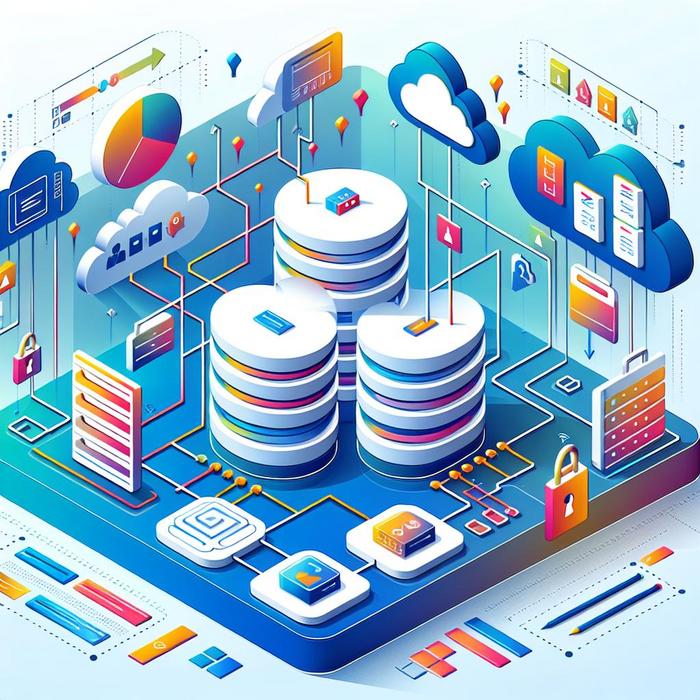Table of Contents Hide
Market Guide for Next-Gen Data Observability Tools
 6 MIN. READING
6 MIN. READING
Could Database Virtualization Be the Building Block for Future-Ready Enterprises?
The revolutionary potential of database virtualization in shaping resilient data-driven enterprises, can hardly be understated. As CIOs, CTOs, data architects and IT decision-makers navigate through tumultuous times, ensuring efficient data provisioning and seamless data access is paramount. A unified data layer, devoid of any data movement or replication, indeed presents an innovative solution to address these challenges. But how does it transform the current business environment that relies heavily on data?
Database Virtualization: A Foundation for Data-Driven Decision Making
Database virtualization is driving an era of accelerated data analytics and testing, allowing businesses to capitalize on insights derived from complex data ecosystems. Its unique ability to provide unified access to data irrespective of the source, permits businesses to streamline their data access, thus expediting the decision-making process.
- Faster Data Provisioning: The strategic edge in today’s competitive market often boils down to who can act on insights faster. The streamlined data access offered by database virtualization facilitates quicker data provisioning – a significant advantage for testing, development, and analytics.
- Higher Data Security: The unified data layer eliminates the need for data movement or replication, thereby substantially reducing the risk of data breaches. The additional layer of data anonymization further safeguards sensitive information, contributing to optimal data security.
Comparing the Market Behemoths
A detailed comparative evaluation of the leading database virtualization platforms delineates distinct characteristics and advantages, potentially empowering decision-makers to make informed investments. It’s important to note that the choice of a platform should align with the specific needs and data strategy of an organization.
Revolutionizing Compliance with Database Virtualization
Data anonymization has emerged as a game-changing solution in compliance management. By replacing sensitive data elements with fictitious yet realistic data, it ensures compliance with stringent data regulations like HIPAA, PCI-DSS, and GDPR.
Database Virtualization: The Way Forward in the Race of Being Future-Ready
With an increasing number of companies turning towards data-driven methods, the integration of database virtualization might be the answer to win this race. A clear understanding of the market guide for data observability tools is needed, unlocking insights into the rapidly evolving databases and data management solutions. For more in-depth information about the advanced data observability, you may consider exploring these resources and market guides.
Evolving with the Data Landscape
While the transformations brought about by database virtualization are indeed significant, they also demand a shift in mindset and approach from leaders. Foreseeing changes in the data landscape, understanding the implications, and fundamentally transforming operations to accommodate these changes are distinct hallmarks of vision, strategic foresight, and effective leadership.
Every decision made today will shape the future of the organization and its ability to leverage data. The integration of sophisticated database virtualization solutions can play a critical role in ensuring that the organization is not just surviving, but thriving in this age of data-driven enterprises.
Database Virtualization: A Game Changer in Data Accessibility
Data accessibility forms the heart of actionable insights. The ability to tap into the power of data, flawlessly and effortlessly, enables enterprises to gain a competitive edge. Interestingly, database virtualization gives the power to access data in real-time, from multiple diverse sources, without any physical data movement. What does this mean? It entails a paradigm shift in data access, leading to strategic decision-making and real-time insights that drive innovation and growth.
Data Anonymization: Safeguarding Your Crucial Business Asset
With the increasing need for data access comes the responsibility of data protection and privacy. In the current scenario, secure data access has become a non-negotiable requirement. By employing data anonymization techniques, database virtualization ensures that sensitive data elements are replaced with fictitious but viable data, protecting against potential data breaches. This approach helps to comply with standard data regulations and safeguards high-stakes information without hindering the data-driven decision-making process.
Unraveling the Power of Database Virtualization
So what does database virtualization unlock? It is more than just a strategic method for efficient data provisioning and robust data security. The innovative solutions presented by database virtualization effectively translate into improved productivity, reduced operating costs, and higher ROI. Moreover, it facilitates agile data-driven processes by offering seamless data access, thereby empowering businesses to thrive in volatile market conditions. Inspiring data-driven decisions facilitates in creating a robust business framework that anticipates changes and stays ahead of market trends.
The Strategic Significance of Database Virtualization in the Market Landscape
Understanding the strategic significance of a technology is key to driving its adoption. Database virtualization’s potential to catalyze business efficiency, foster innovation, and ensure data security renders it a vital tool in the data management arsenal of an enterprise. In a world where digital transformation is shaping business landscapes, advanced database virtualization can be the decisive factor in establishing your organization as a leader in the market.
Why Database Virtualization Excels as a Strategic Tool
One cannot overlook the undeniable advantage of advanced database virtualization tools in enhancing business performance. Their potential to drive operational efficiency, reduce time-to-market, and generate valuable insights makes them an indispensable strategic asset. Given the rapid pace of technological innovation, it is well-befitting that leaders embrace these tools to navigate the evolving business landscape. Exploring the realm of data observability tools can yield valuable insights into the future of data management. Here are some additional sources to consider diving into for executives seeking powerful insights into the market.
Database Virtualization: Reshaping the Data Management Landscape
Digital transformation is here, and database virtualization is pushing traditional boundaries to carve out new avenues in data management. It is undeniable that this advanced technology paves the way for secure, efficient, and effective access to business-critical data. The modern business landscape thus sees a dynamic shift towards incorporating these innovations for maintaining competitive advantage and thriving in a data-driven environment.
Database Virtualization: An Emerging Necessity in Business Operations
The wave of digital transformation is changing the face of business operations, and database virtualization sits at the forefront of this change. By equipping enterprises with unparalleled access to data, it is set to redefine the way leaders make strategic decisions. In the age of constant change and digital revolution, database virtualization emerges as a necessity rather than a luxury.
In essence, the promise of database virtualization holds the potential to shape the future of data-driven industries. As we navigate an era fueled by information, the need for seamless, safe, efficient, and effective access to data has never been more vital. It is high time for the decision-makers to realize the significance of this technology and embark on a path towards digital transformation. Together, let’s usher in an era of data-driven decision making and business innovation.


